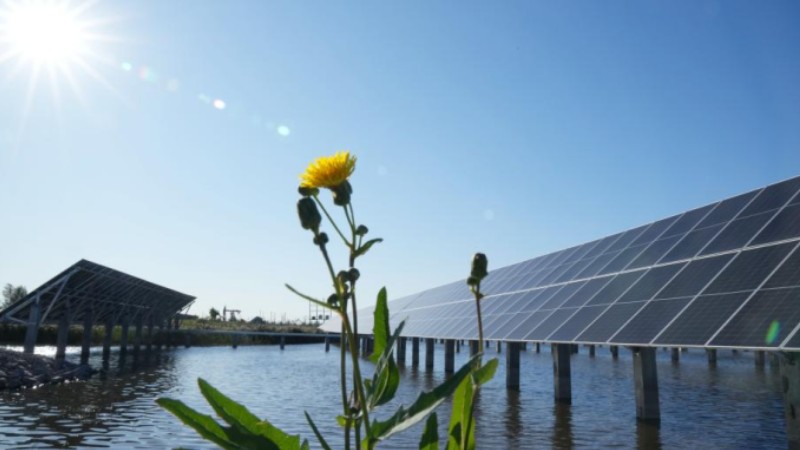Abandoned mine area in NW China repurposed as green-power site
LANZHOU, Sept. 21 (Xinhua) -- After operation halted at a large part of a copper mine in northwest China's Gansu Province in the early 1990s, the site for residue rocks was left barren and covered with slag, epitomizing the term "rustbelt."
Today, the abandoned rock area of the Shenbu Copper Mine in the city of Baiyin is covered with rows of blue solar panels, part of a 100-MW photovoltaic power generation project.
The project, covering an area of about 2,800 mu (186.7 hectares), was developed under a cooperation framework agreement signed between the CNNP Rich Energy Gansu Co., Ltd. and local businesses in December 2019. It has delivered both economic and ecological benefits to the area by combining photovoltaic power generation and the restoration of mined land.
The Shenbu Copper Mine is one of China's large-scale nonferrous metal mines. However, the open-pit mining that started here in the 1950s damaged the local ecosystem, while polluting the air, water and soil in the mined area.
Over the years, local authorities have been searching for green and sustainable solutions to the problems left by the abandoned mine area.
The 100-MW photovoltaic power generation project harnesses the rich sunlight resources of Baiyin District, a region that boasts a peak daily sun-lit period of 5.31 hours.
The project started generating electricity in February. It is expected to generate a total of 140 million kWh of electricity throughout 2023, according to Di Guopeng, head of the Baiyin Huihe Power Station under the CNNP Rich Energy Gansu Co., Ltd.
The photovoltaic power station is estimated to save about 47,000 tonnes of standard coal annually, equivalent to reducing about 1,236 tonnes of sulfur dioxide, about 1,062 tonnes of nitrogen oxides and about 126,790 tonnes of carbon dioxide, according to Di.
Moreover, a solar panel can work as a giant sunshade, cooling the surface of the earth and reducing the infiltration of surface water. "With natural precipitation and ecological rehabilitation, the once damaged ecosystem is likely to be gradually restored," said Di. "The once-deserted site for residue rocks will morph into a sunlight valley for green power."
Walking through the rows of solar panels, one sees green grass sprouting from the once-bald earth. Zeng Kai, who works at the power station, confirmed that plants sprung up from the earth beneath the solar panels during his first year in the job.
"When the project had just been launched, there was not a single trace of vitality, but now I sometimes run into a wild hare or two while patrolling," said Zeng, calling the change "unimaginable."
Photos
Related Stories
Copyright © 2023 People's Daily Online. All Rights Reserved.









